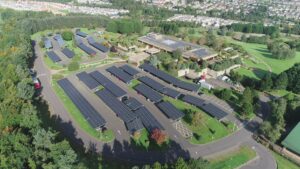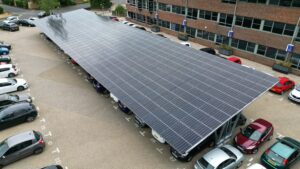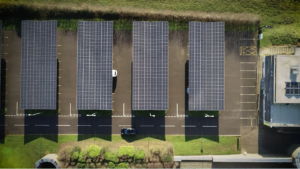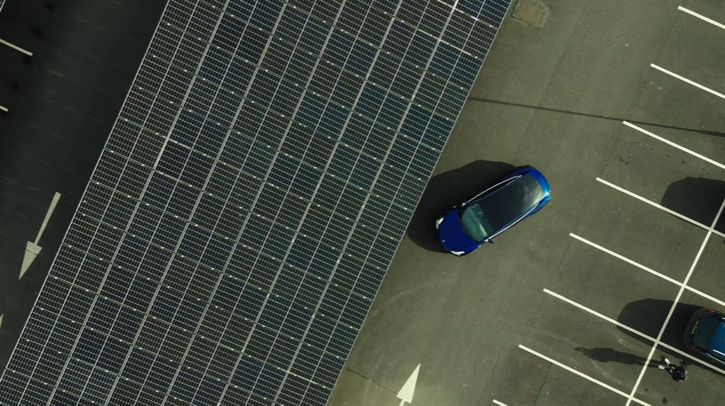Renewable energy company RenEnergy has identified 203,705 spaces across 144 airports in England and Scotland that could be fitted with canopies holding solar PV panels. If all were used, they could generate 188.4GWh of energy – enough to power 52,340 homes annually.
The ongoing research is a result of academics manually identifying parking spaces at airports in England, Scotland, Wales and Northern Ireland by using existing satellite imagery.
Decarbonizing the UK’s airports

With 11 car parks and 51,500 spaces alone, London’s Heathrow Airport has been highlighted as the UK’s prime site for this technology. RenEnergy highlighted that using available facilities, such as parking lots, for the additional purpose of generating green energy will enable the airport to offset its high-profile expansion plans and limit its impact on the environment.
Carports can also provide customers with electric vehicle (EV) charging and overhead cover on top-floor parking levels. This provides EV charging suited to the duration of a passenger’s parking requirement, ensuring they have ample charge when they leave.
The company also reported that airports spend 10-15% of their entire operating budget on power, and that options such as power purchase agreements (PPAs) mean that airports would pay a significantly reduced rate compared with the national grid and have carports installed free of charge – enabling them to invest in other areas.

Damian Baker, managing director of RenEnergy, said, “As one of the hardest industries to decarbonize, aviation faces significant challenges in reducing carbon emissions. However, many airports overlook the potential that’s sitting right in their car parks. Renewable energy is the way forward, and it is crucial for UK airports to adapt and avoid being left behind by other countries.
“Airports have a significant opportunity on their doorstep to reduce carbon emissions while alleviating substantial financial pressures. In a short amount of time, airports can achieve their sustainability goals without the need for expansion or significant changes.”
Ensuring safe operations

According to RenEnergy, carports not only enhance airport sustainability but also provide an added layer of safety. During the day, sunlight can reflect off the paint of parked vehicles, potentially affecting pilots’ visibility. Solar panels, however, are designed to absorb light rather than reflect it, significantly reducing the risk of glare impacting vision during take-off and landing.
Additionally, planning permission is not required to install solar carports, although airports will still have to contact the District Network Operator (DNO) to secure grid capacity and export.
In related news, construction recently began on a solar array of more than 13,000 solar panels on John F. Kennedy International (JFK) Airport’s New Terminal One. Click here to read the full story

